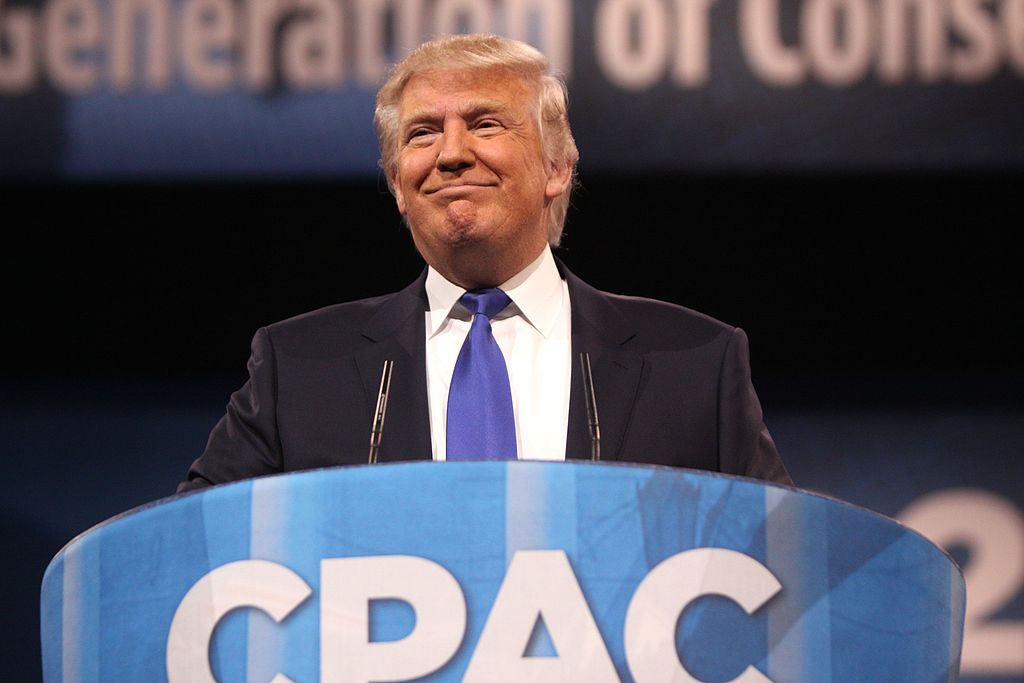In the wake of a pivotal 2024 presidential debate, former President Donald Trump has significantly expanded his lead in the electoral college race, securing a 22-point advantage over Vice President Kamala Harris, according to a new forecast by polling analyst Nate Silver. The latest data reveals Trump holding a 61% probability of winning the electoral college, while Harris trails with 38.7%, marking a considerable shift in favor of the Republican candidate.
The debate, which many viewed as a critical moment in the 2024 election cycle, appears to have reinforced Trump's standing among key voter blocs, allowing him to pull ahead in several battleground states. The post-debate analysis reflects the widening gap between the two candidates, with Trump gaining momentum in regions essential to securing the 270 electoral votes needed for victory.
Silver’s model, known for its data-driven approach and reliance on a combination of state-level polling, historical trends, and demographic shifts, has highlighted a substantial swing toward Trump following the debate. The 22-point leap in electoral probability underscores the former president’s growing appeal among undecided voters, as well as his ability to consolidate support within the Republican base. Harris, while maintaining a stronghold in Democratic-leaning states, has struggled to break through in key swing states, where Trump’s messaging on economic recovery and border security appears to have resonated with voters.
The debate performance itself was seen as a pivotal moment for both candidates. Trump capitalized on his reputation as a straight-talking outsider, emphasizing his record on the economy and positioning himself as the candidate best suited to address national security concerns. His ability to connect with voters on issues such as inflation, job creation, and energy independence seems to have boosted his appeal in states like Ohio, Florida, and Pennsylvania—states that are crucial in determining the electoral college outcome.
Harris, who has faced challenges in gaining traction with voters outside of core Democratic strongholds, used the debate to focus on healthcare, climate change, and social justice issues. While her performance was praised by many within her party, it appears to have done little to shift the broader electoral dynamics in her favor. The latest polling data suggests that while she maintains support in urban and suburban areas, rural and industrial regions continue to lean heavily toward Trump.
Silver’s analysis also points to voter turnout as a decisive factor in the final stretch of the campaign. Trump’s ability to energize his base and draw voters to the polls, particularly in traditionally conservative areas, has been a key element of his electoral strategy. Harris, on the other hand, faces the challenge of mobilizing younger voters and minority communities, both of which are critical to her path to the presidency.
As the 2024 election approaches, both campaigns are expected to double down on efforts to secure the remaining undecided voters, with the electoral college landscape continuing to shift in response to new developments. For Trump, the 22-point lead signals a path toward regaining the White House, while Harris must navigate a more complex electoral map to reverse the trend and close the gap.



 Trump Weighs Military and Diplomatic Options as Protests Intensify in Iran
Trump Weighs Military and Diplomatic Options as Protests Intensify in Iran  UK and NATO Allies Hold Routine Talks on Arctic Security Amid Greenland Deployment Reports
UK and NATO Allies Hold Routine Talks on Arctic Security Amid Greenland Deployment Reports  Israeli Fire Kills Palestinians in Gaza as Ceasefire Tensions Escalate
Israeli Fire Kills Palestinians in Gaza as Ceasefire Tensions Escalate  Trump Considers Starlink to Restore Internet Access in Iran Amid Protests
Trump Considers Starlink to Restore Internet Access in Iran Amid Protests  Norwegian Nobel Institute Clarifies Nobel Peace Prize Rules After Trump Remarks
Norwegian Nobel Institute Clarifies Nobel Peace Prize Rules After Trump Remarks  Bangladesh Signals Willingness to Join International Stabilization Force in Gaza
Bangladesh Signals Willingness to Join International Stabilization Force in Gaza  Myanmar Military-Run Election Draws Criticism as Voters Head to Polls Amid Ongoing Conflict
Myanmar Military-Run Election Draws Criticism as Voters Head to Polls Amid Ongoing Conflict  U.S. Military Launches Multiple Airstrikes in Syria Targeting Islamic State
U.S. Military Launches Multiple Airstrikes in Syria Targeting Islamic State  Trump Weighs Blocking Exxon Investment as Venezuela Deemed “Uninvestable”
Trump Weighs Blocking Exxon Investment as Venezuela Deemed “Uninvestable”  Russia Launches Overnight Air Attack on Kyiv, Causing Fire as Air Defenses Respond
Russia Launches Overnight Air Attack on Kyiv, Causing Fire as Air Defenses Respond  Trump Signs Executive Order to Protect Venezuelan Oil Revenue Held in U.S. Accounts
Trump Signs Executive Order to Protect Venezuelan Oil Revenue Held in U.S. Accounts  Markets React as Tensions Rise Between White House and Federal Reserve Over Interest Rate Pressure
Markets React as Tensions Rise Between White House and Federal Reserve Over Interest Rate Pressure  Trump Tightens Pressure on Cuba as Venezuelan Oil Supplies Halt
Trump Tightens Pressure on Cuba as Venezuelan Oil Supplies Halt  DHS Sends Hundreds More Officers to Minnesota After ICE Shooting Sparks Nationwide Protests
DHS Sends Hundreds More Officers to Minnesota After ICE Shooting Sparks Nationwide Protests  Vitol to Ship First U.S. Naphtha Cargo to Venezuela Under New Oil Supply Deal
Vitol to Ship First U.S. Naphtha Cargo to Venezuela Under New Oil Supply Deal  U.S. Prosecutors Investigate Fed Chair Jerome Powell Over Headquarters Renovation
U.S. Prosecutors Investigate Fed Chair Jerome Powell Over Headquarters Renovation  Trump Reignites Greenland Takeover Claims, Citing U.S. Security and NATO Tensions
Trump Reignites Greenland Takeover Claims, Citing U.S. Security and NATO Tensions 































